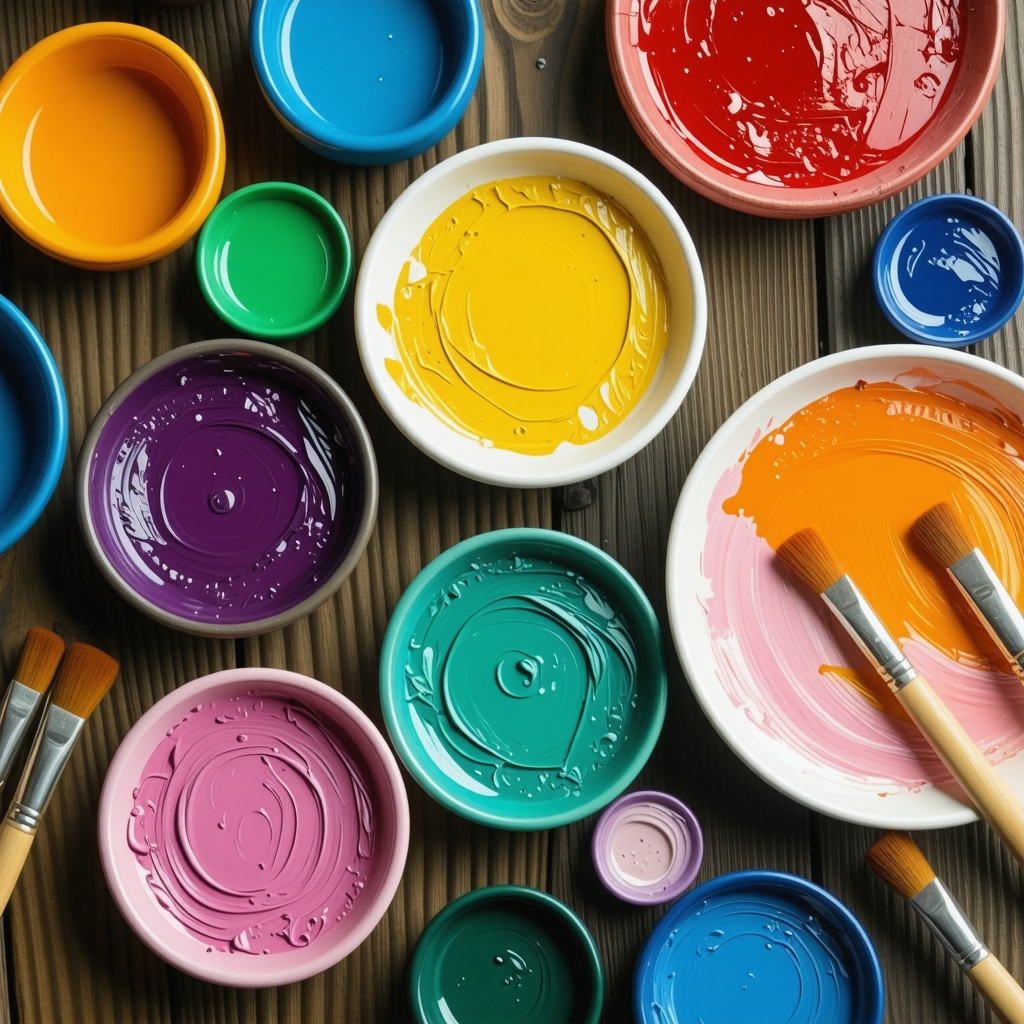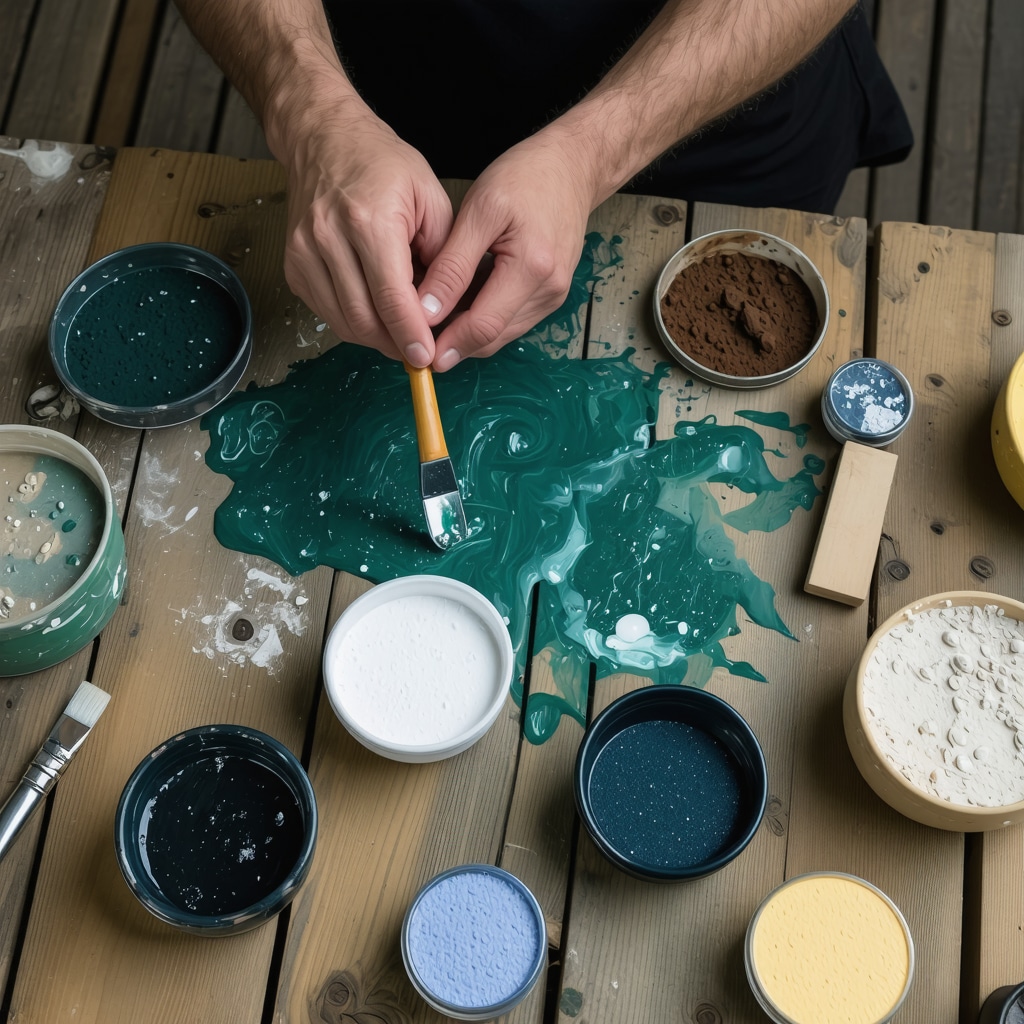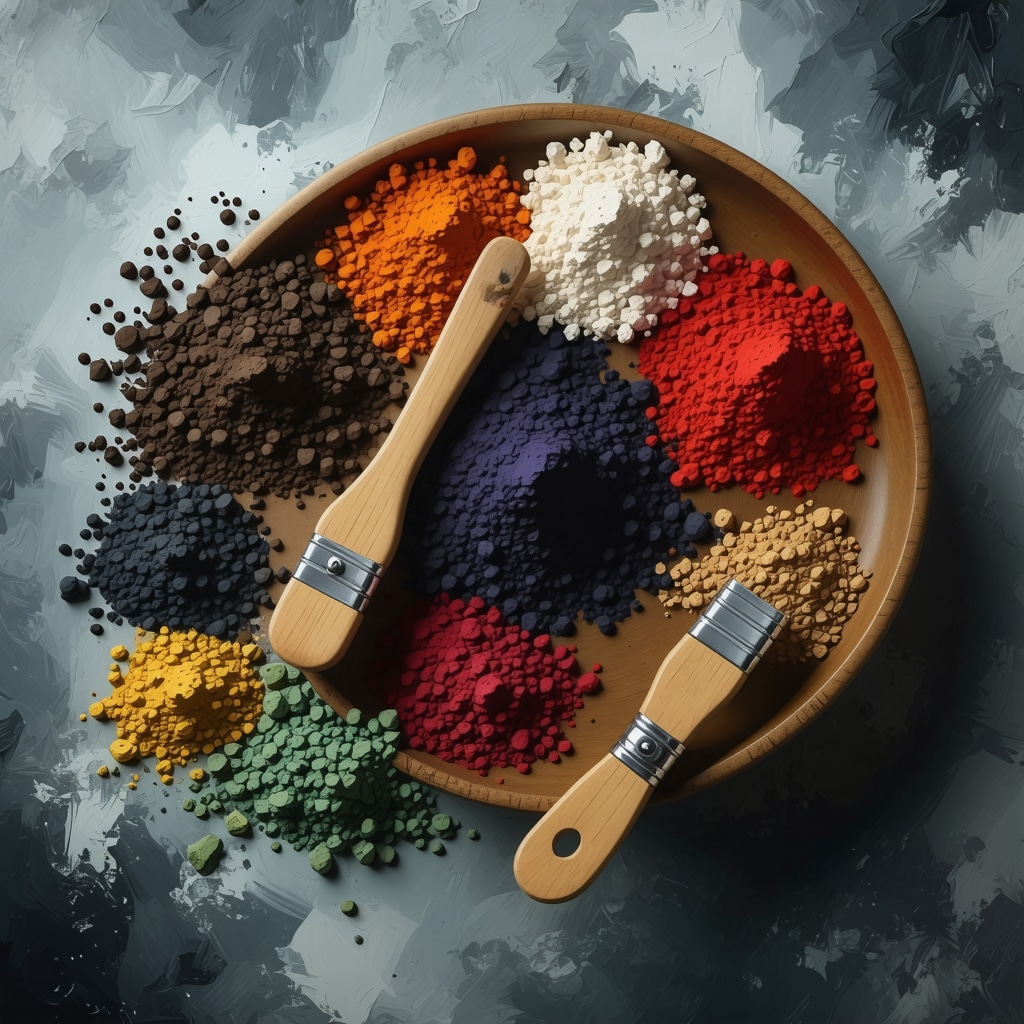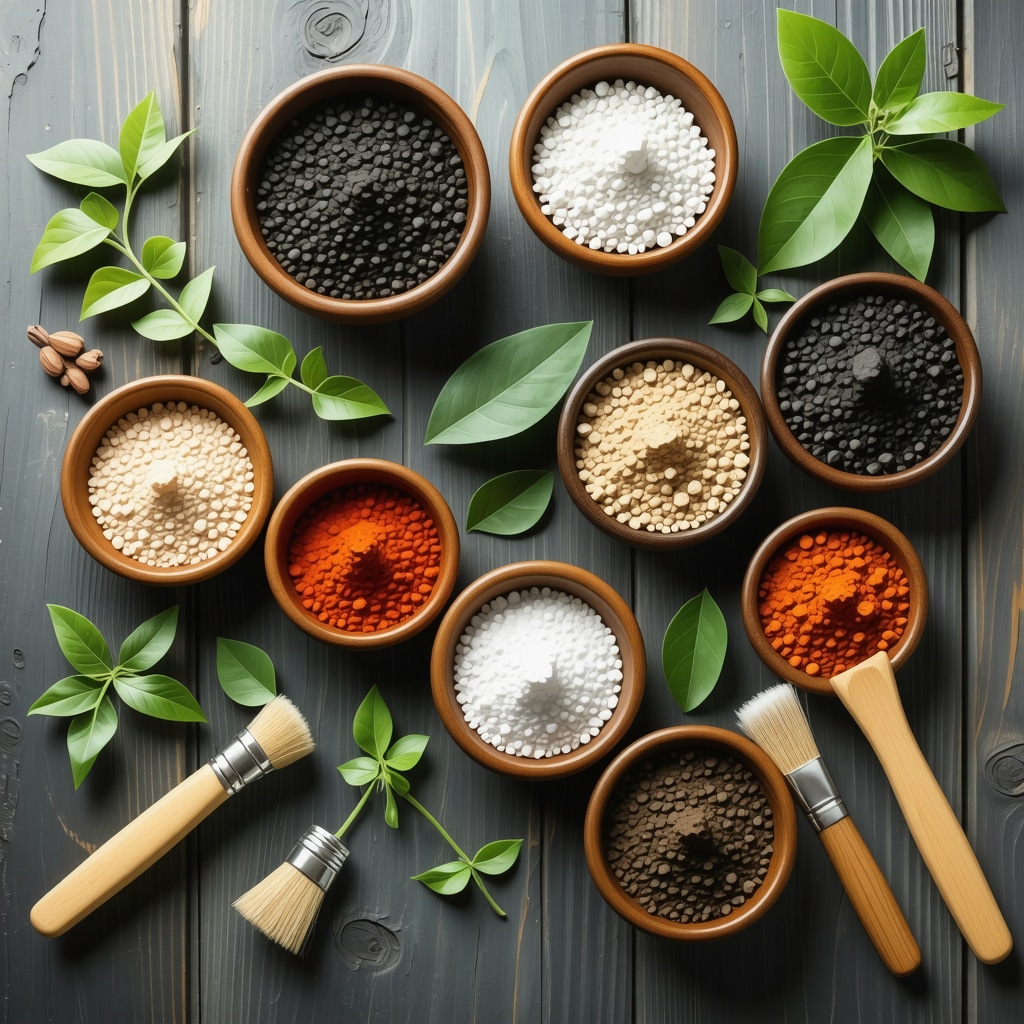How I Discovered the Joy of Crafting My Own Natural Earth Paints
One rainy afternoon, feeling inspired to reconnect with nature and creativity, I decided to make my own natural earth paints. The idea of crafting eco-friendly pigments right from raw earth materials fascinated me—no harsh chemicals, just pure, earthy colors. This personal project not only satisfied my love for DIY but also deepened my appreciation for sustainable art supplies.
Gathering Materials: A Walk Through Nature’s Palette
My first step was collecting natural clays, ochres, and other mineral-rich soils from nearby woods and riverbanks. I remember the excitement of spotting vibrant reds and yellows nestled in the soil layers. Using simple sieves and water, I separated fine pigments, then ground them to powder. The process felt like uncovering hidden treasures, each particle holding a story of the earth.
Mixing and Binding: Turning Pigments into Paint
To transform the powdered pigments into usable paints, I mixed them with natural binders like egg yolk for tempera or gum arabic for watercolors. This step required some trial and error to get the right consistency and durability. I found the guidance from the DIY Natural Earth Paints guide invaluable for understanding ratios and techniques that professional artists use.
Why Choose Natural Earth Paints Over Commercial Alternatives?
I often get asked why I prefer crafting these pigments instead of buying ready-made paints. For me, making natural earth paints is about sustainability and authenticity. Commercial paints can contain synthetic dyes and toxic additives that harm the environment and sometimes the artist. By creating my own, I control every ingredient, ensuring an eco-friendly and safe art experience. Plus, the unique textures and subtle color variations of natural pigments add depth and character to my artwork that synthetic paints just can’t replicate.
Sharing the Experience: Join Me in This Eco-Friendly Art Journey
If you’re curious about exploring natural pigments yourself, I encourage you to start small—find a local source of clay or ochre, gather simple binders, and experiment. It’s a rewarding journey that connects you to earth’s raw beauty. Feel free to share your experiences or questions in the comments; I love hearing how others bring their creativity and sustainability together. For more inspiration on eco-conscious projects, you might enjoy browsing through engaging DIY crafts for all ages that also emphasize natural materials and creativity.
For those interested in the science behind pigment making, the Smithsonian Institution offers fascinating insights into mineral pigments and their uses throughout history (Smithsonian Mineral Pigments).
Enhancing Durability and Vibrancy in Your Natural Earth Paints
Once you’ve mastered the basics of creating natural earth paints, the next challenge is improving their durability and color intensity. Experimenting with different binders like casein, derived from milk proteins, can significantly boost the paint’s adhesion and longevity, especially for wall murals or outdoor artwork. Additionally, incorporating natural additives such as honey or glycerin can enhance the paint’s flexibility and prevent cracking as it dries.
Layering pigments with varying particle sizes also influences the paint’s appearance: finer powders yield smoother finishes, while coarser grains add texture and depth—a technique often employed in traditional fresco painting. Remember, the balance between pigment load and binder quantity is crucial; too much pigment can make the paint brittle, while excessive binder may reduce color saturation.
Exploring Eco-Friendly Pigment Sources Beyond Soil
While clays and ochres provide a rich palette, other natural sources expand your creative scope. Charcoal powder offers deep blacks, while ground botanical materials like indigo leaves or turmeric root yield unique blue and yellow hues respectively. These organic pigments require careful preparation to ensure colorfastness and may benefit from protective coatings or varnishes made from natural resins.
Harvesting pigments sustainably means respecting local ecosystems—avoid over-collecting and opt for fallen leaves or pruned materials. This ethical approach aligns with the principles of sustainable art, fostering a deeper bond between artist and environment.
How Can Advanced DIY Techniques Elevate the Quality of Natural Earth Paints?
To elevate your natural earth paints to professional-grade quality, consider integrating advanced techniques such as micronizing pigments for uniform particle size or employing natural preservatives to extend shelf life. Mastering these methods demands patience and experimentation but results in paints with superior consistency, color brilliance, and durability.
For an expert-level guide on pigment preparation and binding, I recommend consulting the comprehensive resources provided by the DIY Natural Earth Paints guide. This resource delves into nuanced ratios, mixing sequences, and natural additive recipes that can transform your DIY pigments into exquisite art materials.
Integrating Natural Earth Paints into Your Sustainable Creative Practice
Incorporating handmade natural earth paints into your artistic workflow not only reduces environmental impact but also enriches your creative expression. Their subtle tonal variations and organic textures inspire unique compositions impossible to replicate with commercial products. Combining these paints with eco-conscious tools and surfaces, such as recycled paper or sustainably sourced canvas, completes a truly green artistic process.
Moreover, sharing your natural paint creations fosters community engagement and knowledge exchange. Join forums and platforms dedicated to sustainable art, or contribute tutorials to inspire others. If you’re interested in expanding your DIY skills further, explore our engaging DIY crafts for all ages that emphasize natural materials and creativity.
Do you have your own tips or experiences with natural pigment crafting? I invite you to share your insights or questions below to help build a vibrant, eco-friendly art community.

Reflecting on the Emotional Connection with Earth-Derived Colors
Working with natural earth paints has been more than just a technical experiment for me; it has become a soulful dialogue with the environment. Each pigment carries a unique story etched by time and geology, and using them connects me intimately with the land beneath my feet. This emotional resonance often guides my creative intuition, pushing me toward compositions that celebrate imperfection and natural beauty. Unlike synthetic colors, these pigments remind me that art is as much about process and relationship as it is about the final image.
Challenges That Taught Me Patience and Adaptability
Over time, I’ve encountered various hurdles in mastering natural earth paints. Issues like uneven pigmentation, binder compatibility, and drying times can be frustrating, especially when working on intricate projects. I learned that patience is essential; sometimes, a batch might require multiple iterations before reaching the desired consistency and hue. Moreover, environmental factors such as humidity and temperature subtly influence how these paints behave, demanding adaptability and close observation. Embracing these challenges has deepened my respect for traditional artists who pioneered these methods centuries ago.
How Do You Balance Artistic Freedom with the Technical Constraints of Natural Pigments?
This question often arises in my conversations with fellow artists exploring eco-friendly materials. The key, I’ve found, is to view technical constraints not as limitations but as creative prompts. For example, the earthy tones and granular textures of natural pigments invite a different style of painting—one that emphasizes texture, layering, and subtle color shifts. Instead of forcing these materials to mimic commercial paints, I allow their characteristics to shape my artistic decisions. This mindset fosters innovation and authenticity.
For those interested in a deeper scientific understanding, the Smithsonian Institution’s mineral pigment resources offer fascinating insights into the mineralogical properties influencing pigment behavior and longevity, which can inform your experimentation and improve your results.
Incorporating Natural Earth Paints into Broader Sustainable Living Practices
Crafting and using natural earth paints is one step in a larger eco-conscious lifestyle that I continually strive to develop. Pairing these paints with reclaimed or sustainably sourced surfaces, like recycled paper or organic cotton canvases, creates a holistic approach to sustainable art. I’ve also found joy in integrating this practice with other green DIY projects, such as eco-friendly home decor ideas or natural dyeing techniques, which complement and enrich the creative process.
Engaging with communities online or locally that prioritize sustainability amplifies this journey, offering support, inspiration, and shared knowledge. If you’re exploring these paths, I encourage you to join forums and contribute your experiences, helping cultivate a vibrant network of eco-conscious creators.
Personal Insights on the Future of Natural Pigment Crafting
Looking ahead, I see natural earth paints as a medium ripe for innovation, blending traditional wisdom with modern science and sustainability ethics. Experimentation with advanced techniques like micronizing pigments or developing bio-based binders could elevate these paints to new levels of performance while maintaining their environmental integrity. I’m excited to continue exploring these frontiers and sharing discoveries with fellow artists passionate about ecological stewardship.
If you’re intrigued by expanding your DIY skills towards sophisticated projects, the guides on step-by-step DIY techniques offer structured learning pathways that can complement your pigment crafting adventures.
What unique experiences or challenges have you faced in your natural pigment journey? Feel free to share your stories or ask questions below — building this community enriches us all.

Refining Pigment Quality Through Micronization and Purification
One of the most transformative steps I incorporated into my natural earth paint workflow was the micronization of pigments. By reducing mineral particles to uniform, ultrafine sizes using specialized grinding tools or even a DIY ball mill, the resulting paint achieves an unparalleled smoothness and saturation. This refinement not only enhances the vibrancy but also improves pigment dispersion within the binder, creating a more consistent application. I also began experimenting with purification methods such as repeated washing and sedimentation to remove impurities that could dull the color or impact longevity. These meticulous processes, although time-consuming, yield paints that rival commercial quality while preserving their eco-friendly essence.
Innovative Bio-Based Binders and Their Impact on Paint Longevity
Beyond traditional binders like egg tempera or gum arabic, I delved into bio-based alternatives sourced from plant and microbial origins. For example, exploring aloe vera gel and fermented starches as natural adhesives introduced new textural possibilities and improved flexibility in the dried paint films. Such experimentation aligns with sustainability goals by minimizing animal product use and chemical additives. However, each binder’s interaction with specific pigments required nuanced adjustments—sometimes a binder that excelled with ochres performed poorly with charcoal. These discoveries emphasized the necessity of bespoke formulations tailored to the pigment-binder synergy.
How Can Integrating Natural Earth Paints with Eco-Conscious Surface Treatments Enhance Artwork Durability?
An advanced aspect I’ve explored involves pairing natural earth paints with eco-friendly surface treatments to protect and enhance the artwork’s lifespan. Utilizing natural sealants such as beeswax-infused oils or plant-based varnishes creates breathable, UV-resistant coatings that preserve pigment vibrancy without introducing synthetic chemicals. Combining these treatments with sustainably sourced canvases or reclaimed wood panels bridges the gap between material integrity and environmental responsibility. For those interested in detailed protocols on surface preparation and finishing techniques, the advanced staining and sealing guide offers transferable insights that can be adapted for fine art applications.
From a scientific perspective, I found the recent publications by the Getty Conservation Institute invaluable. Their research on natural materials for art conservation offers evidence-based strategies to optimize both aesthetic qualities and durability in sustainable art practices (Getty Conservation Institute Science Projects).
Fostering a Community of Eco-Conscious Artists Through Knowledge Sharing
Throughout this journey, sharing my evolving methodologies and challenges has been deeply rewarding. Engaging with fellow artists passionate about sustainability enriches the creative process and spurs collective innovation. I invite readers to join this vibrant dialogue—whether by contributing personal experiences, posing nuanced questions, or experimenting alongside. For those eager to expand beyond natural pigments, exploring step-by-step DIY techniques can provide structured pathways to augment your craft with sophisticated, eco-friendly projects that complement your pigment-making expertise.
Your unique insights and stories are invaluable; please share them below to cultivate a thriving community dedicated to sustainable artistry.

Things I Wish I Knew Earlier (or You Might Find Surprising)
The Patience Behind Every Pigment
At first, I underestimated how much patience natural earth paint crafting demands. Waiting for pigments to settle during purification or testing different binder ratios felt tedious, but with time I realized these pauses are part of an intimate dialogue with the materials. Learning to embrace the slow pace transformed frustration into a meditative process that deepened my connection to the earth.
Color Variability Is a Feature, Not a Flaw
Initially, I wished my natural paints had the uniform brightness of commercial brands. But over time, I learned to appreciate the subtle shifts and textures as unique character traits. These variations tell a story of their geological origins and add organic depth that synthetic paints can’t replicate. Accepting this helped me loosen perfectionism and enjoy the creative surprises.
Environmental Factors Shape Your Results More Than You Think
Humidity, temperature, and even the season can influence how natural earth paints behave. I discovered that adjusting binder amounts or drying times according to weather conditions greatly improved the final outcome. This awareness made me more observant and adaptable, turning environmental challenges into creative opportunities rather than obstacles.
Every Pigment Has Its Own Best Match
Not all binders work equally well with every pigment. For example, egg tempera pairs beautifully with ochres but might not bond as well with charcoal powders. Experimenting with combinations taught me to tailor recipes rather than rely on one-size-fits-all solutions, leading to richer textures and lasting durability.
Community Sharing Accelerates Learning
Connecting with other eco-conscious artists sharing their pigment recipes, successes, and failures has been invaluable. These exchanges often sparked new ideas and saved me from repeated mistakes. Don’t hesitate to join forums or local groups—it’s a rewarding way to grow your craft and contribute.
Resources I’ve Come to Trust Over Time
DIY Natural Earth Paints Guide – This comprehensive online resource offers expert advice on pigment ratios, binder selection, and mixing techniques. It felt like having a seasoned mentor guiding me through each step, making complex processes approachable. Check it out here.
Smithsonian Mineral Pigments – The Smithsonian’s educational pages provide fascinating scientific insights into the mineral properties and historical uses of pigments. Understanding the geology behind the colors enriched my experimentation and respect for traditional methods. Explore their resources here.
Getty Conservation Institute – For those interested in advanced preservation techniques and natural materials research, the Getty’s science projects offer evidence-based strategies for optimizing durability and aesthetics in sustainable art. Their research inspired me to refine my pigment purification and binder choices. Discover more here.
Engaging DIY Crafts for All Ages – When I wanted to broaden my eco-friendly creative practice, this collection of projects using natural materials offered inspiring ideas to complement pigment making, especially for group or family activities. It’s a treasure trove for anyone wanting to integrate sustainability into various crafts. Browse it here.
Parting Thoughts from My Perspective
Making natural earth paints has been a profoundly rewarding journey that taught me patience, respect for materials, and the joy of eco-conscious creativity. The subtle textures and hues I achieve through this craft carry not just pigment but the story of the earth itself—something commercial paints can never replicate. Integrating these paints into my sustainable artistic practice feels like a true partnership with nature, one that challenges and inspires me simultaneously.
If you’re curious, I encourage you to explore this path with an open mind and heart. Let the quirks of natural pigments guide your creative intuition rather than constrain it. And if this resonated with you, I’d love to hear your thoughts or experiences in the comments below. Sharing our journeys helps build a stronger, more vibrant community of eco-conscious artists.


I absolutely love how this post captures the heartfelt journey of crafting natural earth paints. The part about gathering mineral-rich soils and sifting them felt like rediscovering the ancient connection between art and earth. I’ve tried making natural pigments myself, but I found balancing the binder ratios quite tricky at first — sometimes the paint would crack or lose vibrancy after drying, which was frustrating. The suggestion to experiment with natural additives like honey or glycerin to improve flexibility is something I hadn’t tried yet but definitely plan to explore! Also, the reminder that colour variability is a feature, not a flaw, really resonated with me. It’s taken me a while to embrace the subtle irregularities as part of the paint’s unique charm rather than a shortcoming. Has anyone else found particular natural binder combinations or additives that consistently improve both durability and colour intensity? I’d love to hear what other sustainable artists have discovered to make their earth paints both eco-friendly and long-lasting without compromising that authentic, earthy aesthetic.
Great question, Ella — I’ve wrestled with the same cracking/vibrancy issues and a few simple tweaks helped me a lot. For starters, always make small test tiles so you can see how a mix behaves as it dries and over a week or two. Egg yolk tempera: many artists start with roughly equal parts yolk to pigment (by volume) and thin with water — it gives excellent adhesion with ochres but can be brittle if overloaded with pigment. Casein (reconstituted from skim milk powder or rennet) is wonderful for durability on panels and outdoor work; it’s more flexible than plain egg and often keeps colour depth better. For additives, glycerin (just a few drops per tablespoon of binder) improves flexibility without dulling much, whereas honey can help but is hygroscopic and needs care — use tiny amounts and store mixes airtight. A tiny dash of denatured alcohol or natural clove oil can reduce mould in water-based mixes. Micronising your pigment and thorough washing before binding will also noticeably boost saturation. Curious — has anyone tried fermented starch or aloe as binders and what ratios worked for you?
Wow, this post really resonates with me. I’ve always loved the idea of connecting with nature through art, and making my own pigments sounds like such a fulfilling process. I recently started experimenting with ground turmeric and indigo for natural dyes, but I haven’t quite mastered turning them into durable paints yet. I find that with ochre pigments, adding a small amount of natural gum arabic helps with adhesion and colour depth. Has anyone else noticed particular natural binders that work well across different organic pigments? I’m also curious about techniques to improve shelf life and prevent mould, especially with plant-based components. Reconditioning pigments through thorough washing and drying has significantly improved their vibrancy, but I wonder if there are additional tips for maintaining their quality over time. The idea of sustainably sourcing materials and respecting ecosystems really encourages me to continue experimenting responsibly. Would love to hear your experiences – any tips on balancing natural additives with pigment strength? Thanks for such inspiring content!” ,
This post really struck a chord with me, especially the part about connecting deeply with the land through pigment gathering and preparation. I’ve been experimenting with natural earth pigments for a while now, and one challenge I faced was keeping the colours vibrant over time—especially outdoors. A tip that helped me was adding a small amount of natural beeswax to the mixed paint, which creates a slight protective layer without compromising the earthy aesthetic. Have others found natural sealants or finishes that effectively enhance durability while maintaining eco-friendliness? I’d love to learn what works for outdoor displays or artworks exposed to the elements, as I believe longevity is key in sustainable art. Also, I’m curious about the best ways to store these pigments for long-term use without losing their vibrancy. This journey of making and cherishing earth-based colours has truly deepened my appreciation for the land’s artistry. Would love to hear everyone’s tips and experiences on maintaining colour intensity and resilience naturally.